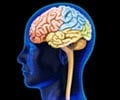Some neurons in the part of our brain are responsible for recognizing objects. The way in which these neurons respond to being shown a barrage of images has been studied by scientists.

In previous studies, researchers found that when subjects were shown a single, familiar image, their neurons responded less strongly than when they were shown an unfamiliar image. However, in the current study, the CNBC researchers found that when subjects were exposed to familiar and unfamiliar images in a rapid succession, their neurons — especially the inhibitory neurons — fired much more strongly and selectively to images the subject had seen many times before.
"It was such a dramatic effect, it leapt out at us," said Carl Olson, a professor at Carnegie Mellon. "You wouldn't expect there to be such deep changes in the brain from simply making things familiar. We think this may be a mechanism the brain uses to track a rapidly changing visual environment."
The researchers then ran a similar experiment in which they used themselves as subjects, recording their brain activity using EEG. They found that the humans' brains responded similarly to the animal subjects' brains when presented with familiar or unfamiliar images in rapid succession. In future studies, they hope to link these changes in the brain to improvements in perception and cognition.
Source-Eurekalert











